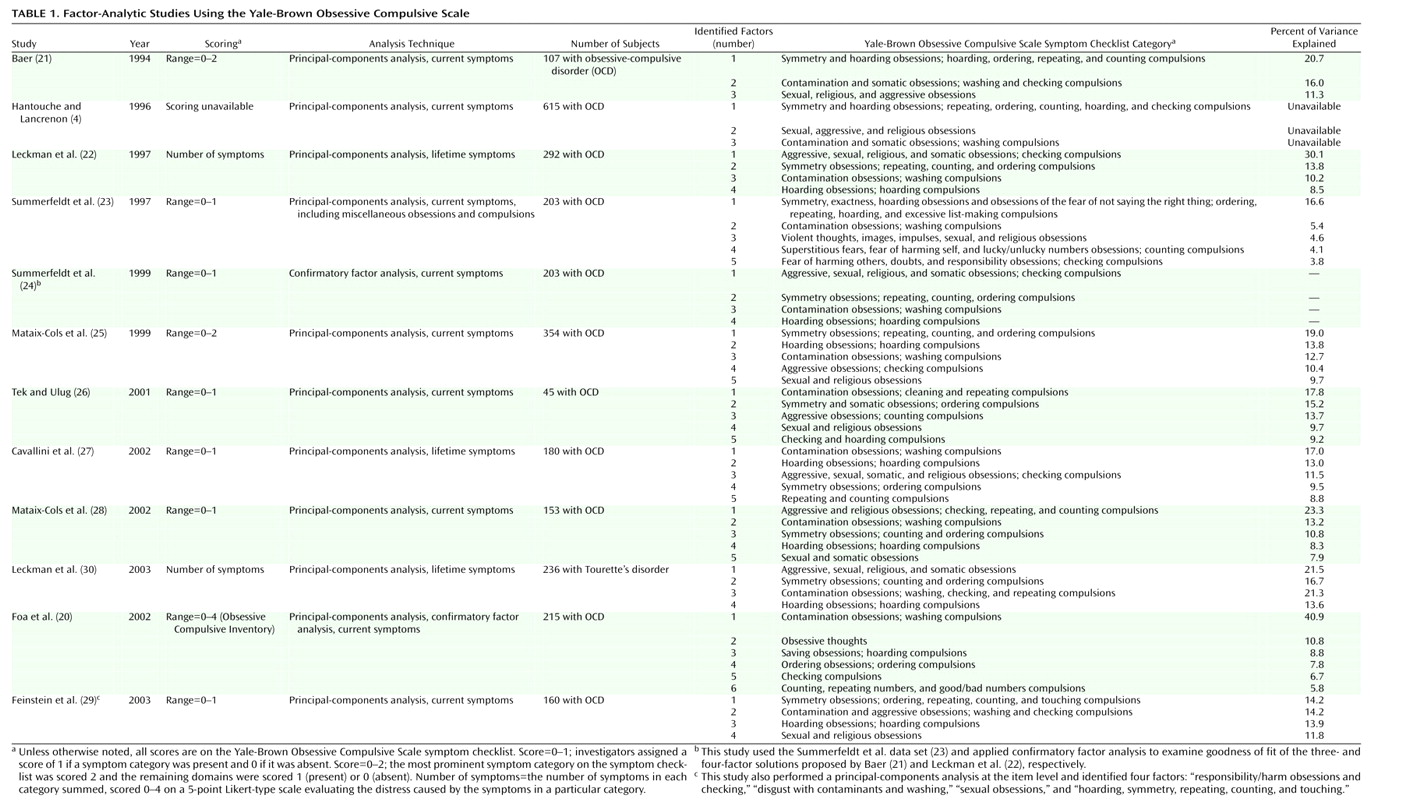Functional neuroimaging studies have greatly increased our understanding of the neural mechanisms underlying OCD. Although the replicability among these studies has been imperfect, they strongly link obsessive-compulsive symptoms with activation of the orbitofrontal cortex, with less consistent involvement of the anterior cingulate gyrus, the striatum, the thalamus, the lateral frontal and temporal cortices, the amygdala, and the insula
(44).
Most previous studies lumped together patients with mixed symptoms. Only a limited number of studies used patients with one predominant type of symptom or compared mutually exclusive groups of patients. In one positron emission tomography study, Rauch et al.
(45) found that checking symptoms correlated with increased—and symmetry/ordering with reduced—regional cerebral blood flow (rCBF) in the striatum, whereas washing symptoms correlated with increased rCBF in the bilateral anterior cingulate and the left orbitofrontal cortex. Phillips et al.
(46) compared OCD patients with mainly washing symptoms with OCD patients with mainly checking symptoms while viewing pictures of either normally disgusting scenes or washing-relevant pictures using functional magnetic resonance imaging (fMRI). When viewing washing-related pictures, only washers demonstrated activations in regions implicated in emotion and disgust perception (i.e., visual regions and the insular cortex), whereas checkers demonstrated activations in frontostriatal regions and the thalamus. In a similar study, OCD patients with predominantly washing symptoms demonstrated greater activation than comparison subjects in the right insula, the ventrolateral prefrontal cortex, and the parahippocampal gyrus when viewing disgust-inducing pictures
(47). Saxena et al.
(48) found that 12 patients with predominant hoarding symptoms showed reduced glucose metabolism in the posterior cingulate gyrus (versus comparison subjects) and the dorsolateral prefrontal cortex (versus nonhoarding OCD subjects) and that the severity of hoarding in the whole patient group (N=45) correlated negatively with metabolism in the latter region. Limitations of these studies included the artificial division between washers, checkers, and hoarders and in the symptom-provocation studies
(46,
47), the exclusive use of washing-related material. A recent fMRI study
(49,
50) used a symptom-provocation paradigm to examine,
within the same patients, the neural correlates of washing, checking, and hoarding symptom dimensions of OCD. Each of these dimensions was mediated by distinct but partially overlapping neural systems. Although both patients and comparison subjects activated similar brain regions in response to symptom provocation, the patients showed greater activation in bilateral ventromedial prefrontal regions (the washing experiment); the putamen/globus pallidus, the thalamus, and dorsal cortical areas (the checking experiment); and the left precentral gyrus and the right orbitofrontal cortex (the hoarding experiment). These results were further supported by correlation analyses within the patient group, which revealed highly specific positive associations between subjective anxiety, questionnaire scores, and neural response in each experiment
(50).
Although preliminary, these studies suggest that different symptoms may be mediated by distinct neural systems and that previous discrepant findings may result from phenotypic variations in the studied samples. Because of the “neural promiscuity” within the frontostriatothalamic loops
(51), it is not surprising that different symptom dimensions often coexist in any given patient.
Much research is needed on the common and distinct neural correlates of various obsessive-compulsive symptom dimensions with symptom-provocation paradigms, as well as combining neuropsychological tasks and neuroimaging techniques. Structural neuroimaging studies have been remarkably inconsistent
(44), and no studies to date, to our knowledge, have examined the relationship between gray and white matter abnormalities and symptom dimensions. Finally, the addition of neuroimaging protocols to treatment studies should be particularly rewarding.


